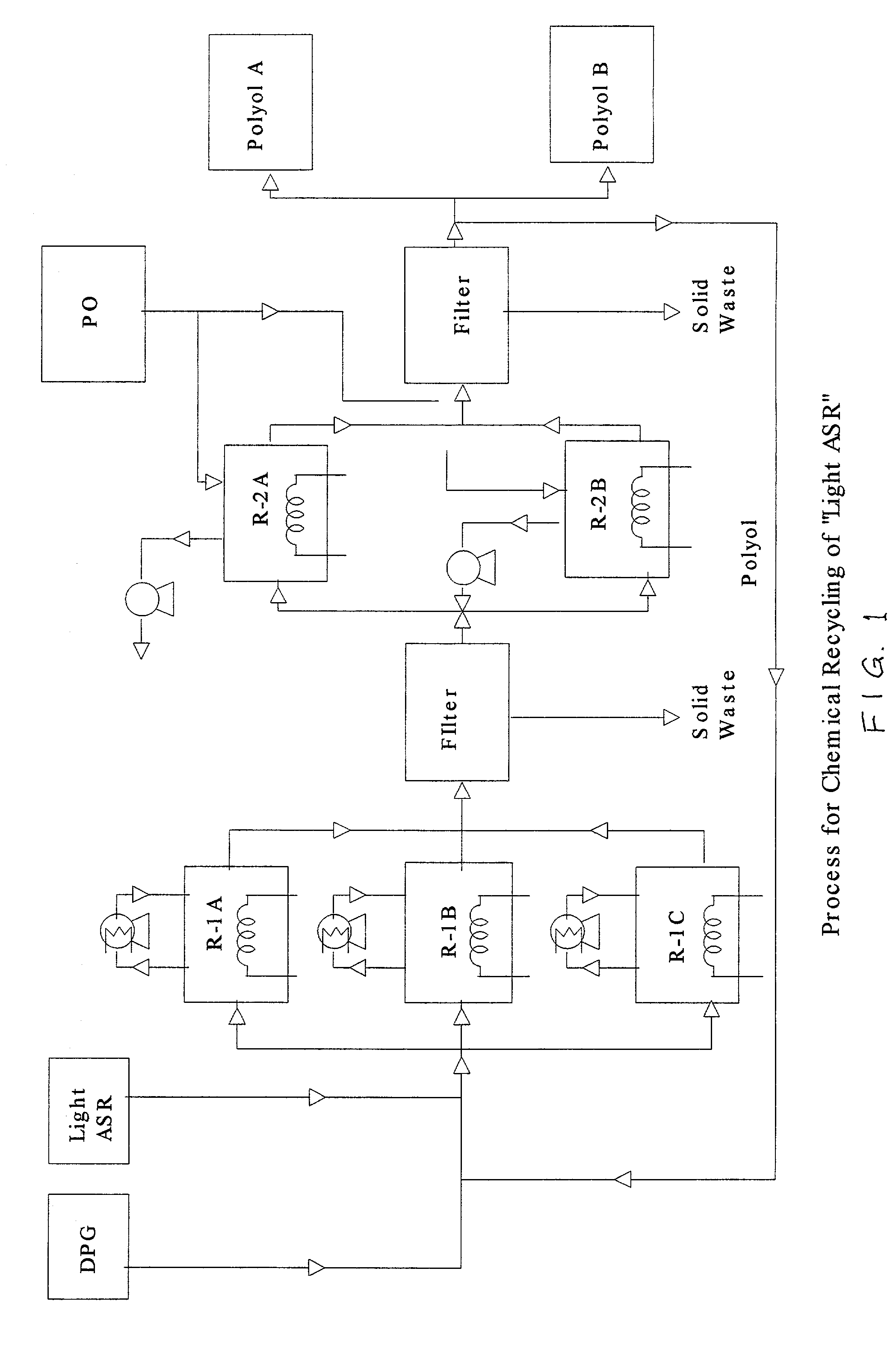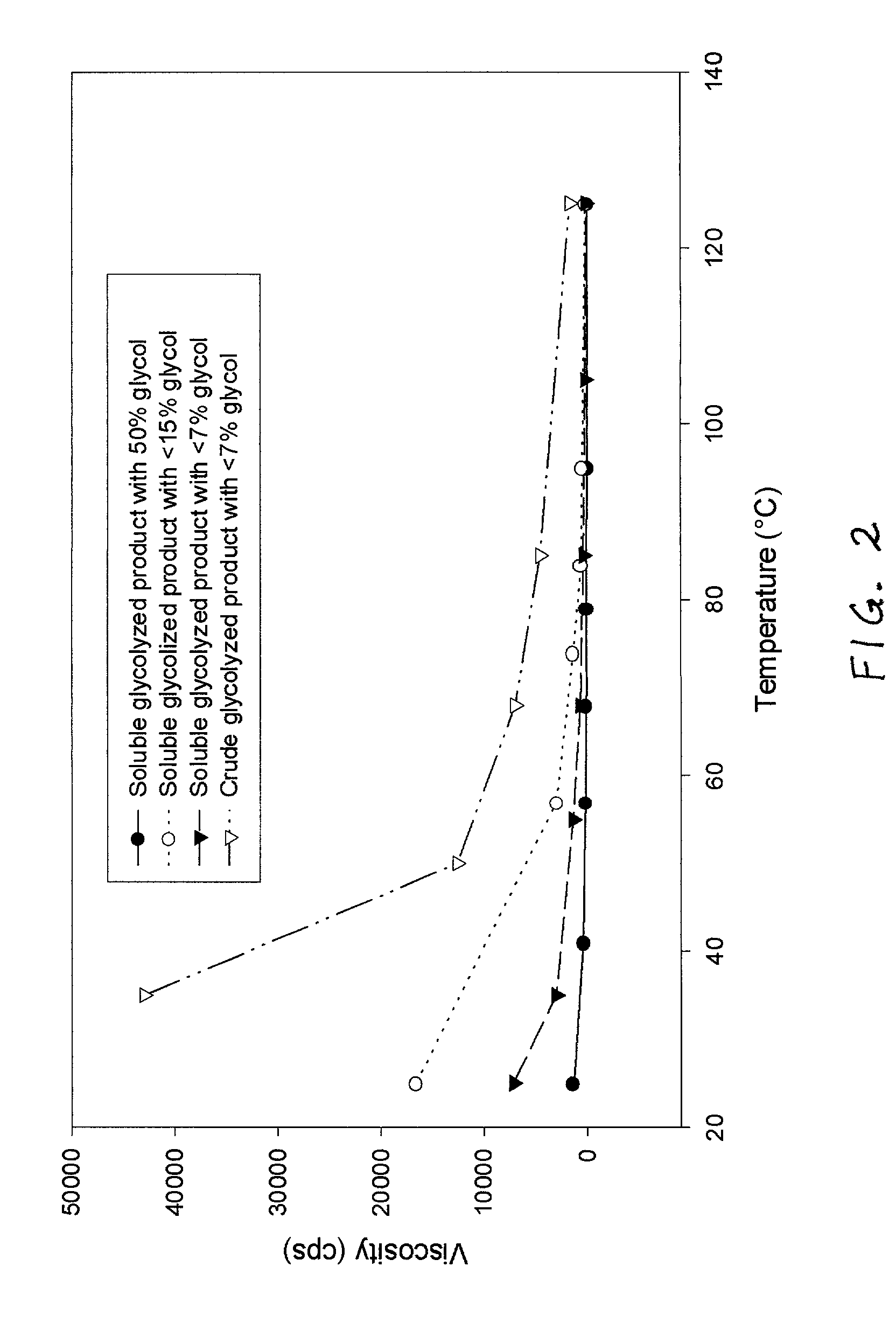Process for chemical recycling of polyurethane-containing scrap
a polyurethane and scrap technology, applied in the field of chemical recycling of polyurethane-containing scrap, can solve the problems of limiting the amount of glycolysis products that can be used in polyurethane formulations, affecting the reactivity of chemolysis products with isocyanates, and large residual low molecular weight glycol reactants
- Summary
- Abstract
- Description
- Claims
- Application Information
AI Technical Summary
Problems solved by technology
Method used
Image
Examples
example 6
(Hypothetical)
[0032] The glycolyzed products of Examples 1-5 could be used as initiators in reaction with propylene oxide and / or ethylene oxide to prepare propoxylated and / or ethoxylated polyol products. The polyol products could then be used to prepare a polyurethane foam. For example, a flexible polyurethane foam could be prepared utilizing the approximate formulation shown in Table 7.
7TABLE 7 Formulations of polyurethane foams based on polyols that can be prepared by oxyalkylation of glycolyzed products as initiators Type of PU foam Conventional All-MDI Based TDI-Based Components Supplier / Origin Slabstock Foam HR Foam HR Foam Polyol #10 (Table 6) Initiator of 345 100 g -- 20 g equivalent weight- propoxylated Polyol #8 (Table 5) Initiator of 236 -- 100 g 80 g equivalent weight- propoxylated / ethoxylated Water 3.9 g 3.4 3.5 g Niax L-620 Osi-Crompton 1.0 g -- --(Surfactant) Tegostab B-4113 Goldschmidt -- 1.0 g --(Surfactant) Tegostab B-8681 Goldschmidt -- -- 0.9 g (Surfactant) Dimet...
PUM
| Property | Measurement | Unit |
|---|---|---|
| pressures | aaaaa | aaaaa |
| temperatures | aaaaa | aaaaa |
| glass transition temperature | aaaaa | aaaaa |
Abstract
Description
Claims
Application Information
 Login to View More
Login to View More - R&D
- Intellectual Property
- Life Sciences
- Materials
- Tech Scout
- Unparalleled Data Quality
- Higher Quality Content
- 60% Fewer Hallucinations
Browse by: Latest US Patents, China's latest patents, Technical Efficacy Thesaurus, Application Domain, Technology Topic, Popular Technical Reports.
© 2025 PatSnap. All rights reserved.Legal|Privacy policy|Modern Slavery Act Transparency Statement|Sitemap|About US| Contact US: help@patsnap.com


